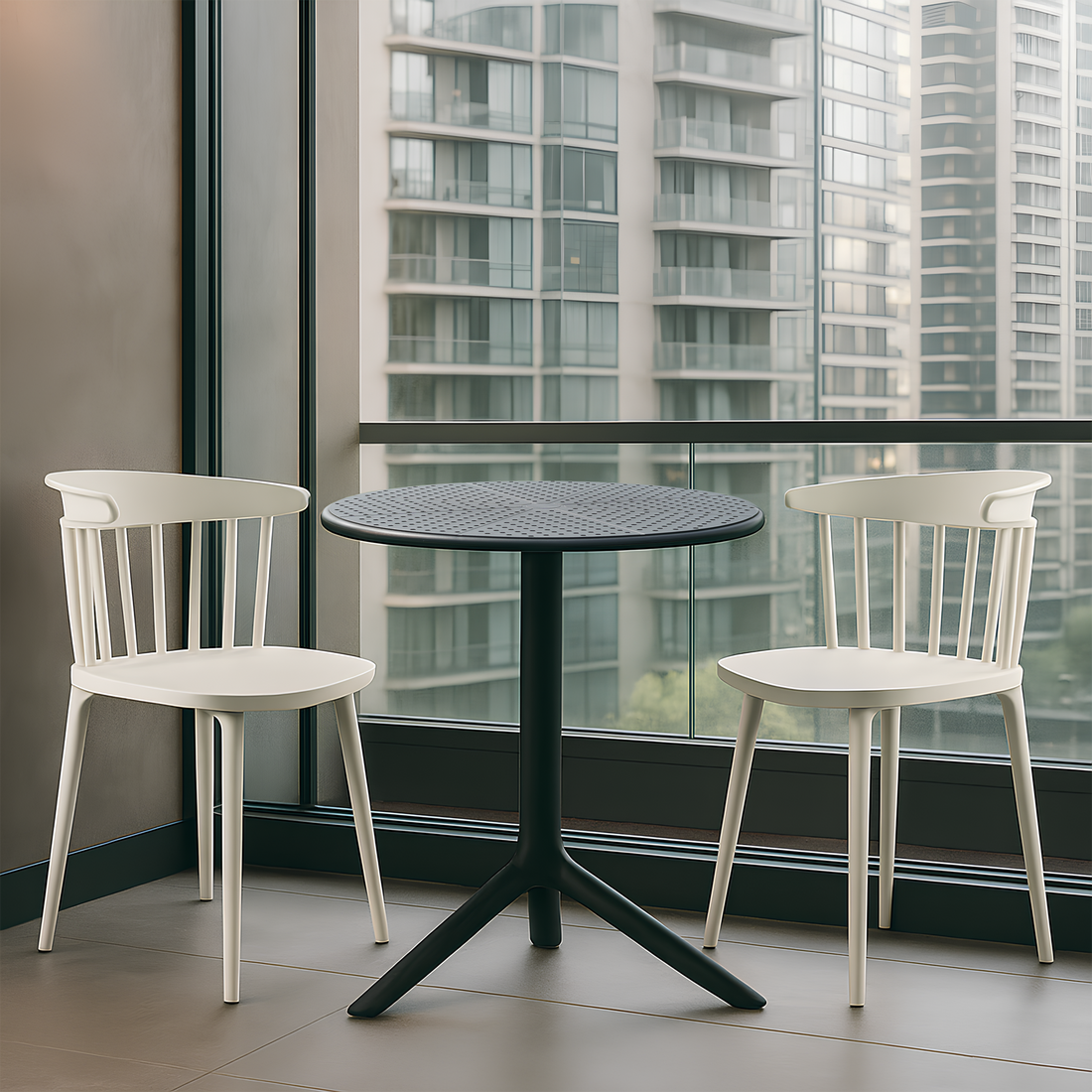
The Significance of Chair Height in Cafe Function and Comfort
Share
Today's cafe is more than a stop for drinking coffee; it is a hub for social interactions, study sessions, and moments of personal leisure. In such settings, design is instrumental in constructing the experiences of customers. Of all the constituents of the success of a cafe, seating is inherent, in addition to the seats, chair height has a unique impact on comfort and functionality.
Chair Height and Customer Comfort
A cafe chair should not just be aesthetically pleasing but ergonomically suited. The chair height can have a direct effect on the posture, mobility, and contentment of the customer. Customers will struggle to reach the table and may adopt poor seating positions if the chair is too low. Alternatively, a chair that is too high will lead to leg and foot strain, resulting in long-term make people unease.

The perfect chair height must make it possible for customers to to sit comfortably in a natural position, their feet lying flat on the floor and their elbows at an easier angle compared to the surface of the table. The balance improves the dining experience, allowing customers to to relax and value their meals or drinks with no make people unease. Caused by distraction.
Functionality in Cafe Operations
Chair height is essential for a cafe's operational effectiveness in addition to patron comfort. Efficiency of employees and the seamless delivery of service rely on streamlined seating configurations. Even chair heights during the dining space, allowing servers to travel quickly and safely between tables without interference.
Furthermore, proper chair heights increase in space use. Cafes accommodate a mix of customers—some working on laptops and others in groups chatting. Chairs that are in good alignment with table levels create flexible spaces so that every category of customer can find the place suitable to their use.

The Relationship Between Chair and Table Height
Chair height cannot be viewed independently; it has to be compared in conjunction with table size. The default ratio stipulates that chairs should have their seats roughly 10 to 12 inches below the table top. This ratio facilitates comfortable leg space, proper sitting posture, and simple. Departures from the ratio undermine the balance between seating and tables, curbing the overall usability of the cafe design.
Aesthetic and Design Considerations
in chairs with several uses create an and ergonomics are paramount; chair height plays a role in the visual balance of a cafe. Low chairs create a comfortable, leisurely atmosphere, suitable for those who plan to stay awhile. Higher chairs, used in conjunction with bar tables, suggest a vibrant and social atmosphere, suiting shorter visits and speedier client turnover. Choosing chair heights that fit the desired mood and aesthetic of the cafe means that design complements the business model.

Long-Term Implications
Investing in a suitably designed and proportioned chairs is more than an aesthetic choice; it is a long-term investment in client contentment and operational efficiency. Guests who feel comfortable are inclined to extend their visits, make repeat purchases, and come back often. At the same time, staff benefit from an environment that promotes smooth service. Over time, such deliberate decisions help to a cafe's reputation and sustained success.
Chair height is a minor aspect, but it has a impact on cafe comfort and usability. Proper measuring improves posture., aid service efficiency, and synchronize with design aspirations. Through careful attention to This element, cafe owners achieve a place where customers are received in comfort and staff members can function efficiently. In the end, the proper chair height contributes to turning a cafe into A location and a lasting experience.
